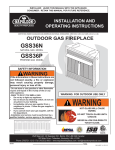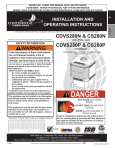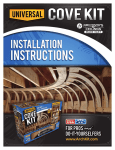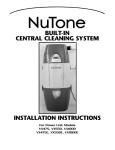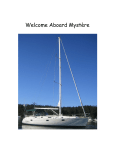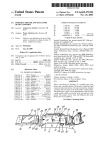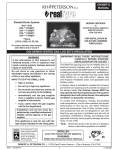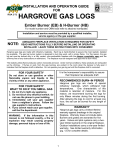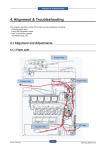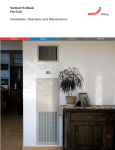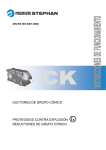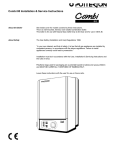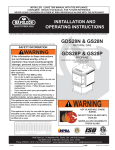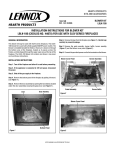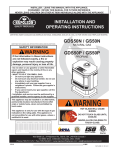Download w415-0118 napoleon service manual - Hearth Products Distributing
Transcript
Service Manual PRODUCED & DISTRIBUTED BY: 24 Napoleon Road Barrie, Ontario Canada L4M 4Y8 Tel: 705-721-1212 Fax: 705-722-6031 TECHNICAL HELP LINE Tel: Fax: Email: Web: 1 - 888 - 721- TECH (8324) 1 - 877 - FAX - TECH (329-8324) [email protected] www.napoleonfireplaces.com 2005 WOLF STEEL LTD. COPYRIGHT 2005 WOLF COPYRIGHT STEEL LTD. ALL RIGHTS RESERVED, NO PART OF THIS BOOK MAY BE REPRODUCED IN ANY FORM OR BY MEANS - GRAPHIC, OR MECHANICAL WITHOUT WRITTEN - GRAPHIC, ALL RIGHTS RESERVED,OR NOTRANSMITTED PART OF THIS BOOK MAY BEANY REPRODUCED OR ELECTRONIC TRANSMITTED IN ANY FORM ORTHE BY PRIOR ANY MEANS PERMISSION FROM WOLF STEEL LTD., BARRIE, ONTARIO, CANADA ELECTRONIC OR MECHANICAL WITHOUT THE PRIOR WRITTEN PERMISSION FROM WOLF STEEL LTD., BARRIE, ONTARIO, CANADA ISO-176 ISO-176 ISO-176 W415-0118/A/07.05.05 W415-0118/A/.07.05.05 Wolf Steel’s Service Manual Index Part 1: Troubleshooting: Direct Vents Pilot Not Lighting Flowchart .................................................................................................... 1 Pilot Not Holding Flowchart ..................................................................................................... 2 Pilot Failure Flowchart .............................................................................................................. 3 Main Burner Not Lighting Flowchart ....................................................................................... 4 Main Burner Delayed Ignition Flowchart ................................................................................ 5 Main Burner Low Flame Flowchart .......................................................................................... 6 Main Burner Failure Flowchart ................................................................................................. 7 Complete Unit Shutdown...........................................................................................................8 Odour Flowchart ........................................................................................................................ 9 Part 2: Troubleshooting: Natural Vents Pilot Not Lighting Flowchart .................................................................................................. 10 Pilot Not Holding Flowchart ................................................................................................... 11 Pilot Failure Flowchart ............................................................................................................ 12 Main Burner Not Lighting Flowchart ..................................................................................... 13 Main Burner Delayed Ignition Flowchart .............................................................................. 14 Main Burner Low Flame Flowchart ........................................................................................ 15 Main Burner Failure Flowchart ............................................................................................... 16 Complete Unit Shutdown ....................................................................................................... 17 Odour Flowchart ...................................................................................................................... 18 Part 3: Troubleshooting: Vent Free Pilot Not Lighting Flowchart .................................................................................................. 19 Pilot Not Holding Flowchart ................................................................................................... 20 Pilot Failure Flowchart ............................................................................................................ 21 Main Burner Not Lighting Flowchart ..................................................................................... 22 Main Burner Delayed Ignition Flowchart .............................................................................. 23 Main Burner Low Flame Flowchart ........................................................................................ 24 Complete Unit Shutdown........................................................................................................ 25 Odour Flowchart ...................................................................................................................... 26 Part 4: Troubleshooting: Other Issues Carboning Flowchart ............................................................................................................... 27 Oil-Canning Flowchart .............................................................................................................. 28 Blower Flowchart ..................................................................................................................... 29 Remote Control Guide ............................................................................................................ 30 Part 5: Testing & Adjustments Testing: Pressures .................................................................................................................... 31 Testing: Gasket ......................................................................................................................... 32 Testing: Switches - Spill Switch .............................................................................................. 32 Testing: Switches - T.stat/Toggle ............................................................................................ 32 Testing: Millivolts - Thermocouple - Robertshaw Valve ...................................................... 33 Testing: Millivolts - Thermocouple - SIT 820 Nova Valve ...................................................... 34 Testing: Millivolts - Thermopile .............................................................................................. 35 Testing: Function - Magnet Coil - Robertshaw Valve .......................................................... 36 Testing: Function - Operator Coil - Robertshaw Valve ....................................................... 37 Testing: Function - Magnet Coil - SIT 820 Nova Valve ........................................................... 38 Testing: Function - Operator Coil - SIT 820 Nova Valve ........................................................ 39 Testing: Pilot Flame ................................................................................................................. 40 Adjustments: Pilot Flame ........................................................................................................ 41 Adjustments: Spill Switch - Robertshaw Valve..................................................................... 42 Adjustments: Spill Switch - SIT 820 Nova Valve ..................................................................... 43 Adjustments: Venturi/Air Shutter .......................................................................................... 44 COPYRIGHT 2005 WOLF STEEL LTD. ALL RIGHTS RESERVED, NO PART OF THIS BOOK MAY BE REPRODUCED OR TRANSMITTED IN ANY FORM OR BY ANY MEANS - GRAPHIC, ELECTRONIC OR MECHANICAL WITHOUT THE PRIOR WRITTEN PERMISSION FROM WOLF STEEL LTD., BARRIE, ONTARIO, CANADA ISO-176 W415-0118/A/07.05.05 PART 1: TROUBLESHOOTING: DIRECT VENTS Pilot Not Lighting Flowchart ................................................................................ 1 Pilot Not Holding Flowchart ................................................................................ 2 Pilot Failure Flowchart ......................................................................................... 3 Main Burner Not Lighting Flowchart .................................................................. 4 Main Burner Delayed Ignition Flowchart ............................................................ 5 Main Burner Low Flame Flowchart ...................................................................... 6 Main Burner Failure Flowchart ............................................................................ 7 Complete Unit Shutdown...................................................................................... 8 Odour Flowchart...................................................................................................... 9 COPYRIGHT 2005 WOLF STEEL LTD. ALL RIGHTS RESERVED, NO PART OF THIS BOOK MAY BE REPRODUCED OR TRANSMITTED IN ANY FORM OR BY ANY MEANS - GRAPHIC, ELECTRONIC OR MECHANICAL WITHOUT THE PRIOR WRITTEN PERMISSION FROM WOLF STEEL LTD., BARRIE, ONTARIO, CANADA ISO-176 W415-0118/A/07.05.05 Page 1 Troubleshooting: Direct Vents Pilot Not Lighting Flowchart Has the inline gas pressure been tested? NO Remove the tube and orifice and clean, make sure no debris has compacted the inside, inhibiting the flow of gas. NO Has the pilot adjustment screw been checked? YES Ensure the adjustment screw has not been tightened closed. Adjust as necessary. (See "Adjustments: Pilot Flame") NO NO Secure / Replace as necessary. Is there a 1/8" gap between the electrode and the pilot hood? NO Adjust position so there is no greater than a 1/8" gap. Has the electrode been examined for damage? (i.e. chipped/broken) NO Replace if damaged or broken. YES Have the pilot light & pilot orifice been checked for blockages? Is the electrode wire connection secure? YES NO YES Check to ensure proper supply pressures are available for ignition. (See "Testing: Procedures") YES YES Is there a spark at the electrode when the push button igniter is pressed? NO Are the fittings on the pilot tube secure? YES Tighten / secure to prevent leaks. NO Has the pilot tube been checked for kinks / leaks? YES Un-kink the tube to prevent blockage, or replace leaking tube. Ensure the opening is not blocked or plugged. Clear if necessary. NO Has the primary air opening on the pilot assembly been checked for blockages? COPYRIGHT 2005 WOLF STEEL LTD. ALL RIGHTS RESERVED, NO PART OF THIS BOOK MAY BE REPRODUCED OR TRANSMITTED IN ANY FORM OR BY ANY MEANS - GRAPHIC, ELECTRONIC OR MECHANICAL WITHOUT THE PRIOR WRITTEN PERMISSION FROM WOLF STEEL LTD., BARRIE, ONTARIO, CANADA ISO-176 W415-0118/A/07.05.05 Page 2 Troubleshooting: Direct Vents Pilot Not Holding Flowchart NO Tighten thermocouple to ensure proper millivolt delivery. NO Clean any buildup off of the tip of the thermocouple to maximize it's exposure to the flame. NO Test the thermocouple to ensure it is within specifications. (See "Testing: Millivolts Thermocouple") YES Has the thermocouple connection been checked? YES Is the tip of the thermocouple clean? YES Has the thermocouple been tested for millivolt generation? NO Test the magnet coil to ensure it is within specification. (See "Testing: Function - Magnet Coil") YES Has the magnet coil of the valve been checked for function? Is the supply line size adequate for the installation? NO Check the local code requirements and replace as necessary. COPYRIGHT 2005 WOLF STEEL LTD. ALL RIGHTS RESERVED, NO PART OF THIS BOOK MAY BE REPRODUCED OR TRANSMITTED IN ANY FORM OR BY ANY MEANS - GRAPHIC, ELECTRONIC OR MECHANICAL WITHOUT THE PRIOR WRITTEN PERMISSION FROM WOLF STEEL LTD., BARRIE, ONTARIO, CANADA ISO-176 W415-0118/A/07.05.05 Page 3 Troubleshooting: Direct Vents Pilot Failure Flowchart NO Check to make sure the pilot is large enough and in the proper position, to properly heat the thermocouple. (See "Testing: Pilot Flame") YES Check to make sure the pressure is not dropping off on activation. (See "Testing: Pressures") NO Test the thermocouple to ensure it is within specifications. (See "Testing: Millivolts Thermocouple") YES Is the pilot flame pattern, position and size correct? NO Is the pilot flame shrinking when the burner is turned on? YES Has the thermocouple been tested for millivolt generation? NO Test the magnet coil to ensure it is within specification. (See "Testing: Function - Magnet Coil") YES Has the function of the magnet coil been checked? NO (See "Complete Unit Shutdown" Flowchart) YES Has the vent system been examined for problems? Are the logs properly positioned? NO Out of place logs can alter the flow of air within the combustion chamber, causing an erratic pilot. COPYRIGHT 2005 WOLF STEEL LTD. ALL RIGHTS RESERVED, NO PART OF THIS BOOK MAY BE REPRODUCED OR TRANSMITTED IN ANY FORM OR BY ANY MEANS - GRAPHIC, ELECTRONIC OR MECHANICAL WITHOUT THE PRIOR WRITTEN PERMISSION FROM WOLF STEEL LTD., BARRIE, ONTARIO, CANADA ISO-176 W415-0118/A/07.05.05 Page 4 Troubleshooting: Direct Vents Main Burner Not Lighting Flowchart NO Connect the thermopile leads to the 1st & 2nd terminals on the valve (THTP & TP). NO Test the thermopile to ensure it is within specifications. (See "Testing: Millivolts Thermopile"). NO Check and clean as required. YES Have the thermopile leads been connected to the 1st & 2nd terminals on the valve (THTP & TP)? YES Has the thermopile been tested for millivolt generation? YES Has the burner & orifice been checked for blockages? NO Connect a switch or remote to terminals 1 & 3. YES Is there a switch or remote connected on terminals 1 & 3? NO Test the operator coil of the valve for resistance. Replace the valve if out of specification. (See "Testing: Function Operator Coil") NO YES Disconnect switch or remote at valve and replace with a jumper wire. Did the burner activate? See "Testing: Switches - T.Stat/Toggle" COPYRIGHT 2005 WOLF STEEL LTD. ALL RIGHTS RESERVED, NO PART OF THIS BOOK MAY BE REPRODUCED OR TRANSMITTED IN ANY FORM OR BY ANY MEANS - GRAPHIC, ELECTRONIC OR MECHANICAL WITHOUT THE PRIOR WRITTEN PERMISSION FROM WOLF STEEL LTD., BARRIE, ONTARIO, CANADA ISO-176 W415-0118/A/07.05.05 Page 5 Troubleshooting: Direct Vents Main Burner Delayed Ignition Flowchart NO Check to make sure the pilot is large enough and in the proper position, to reach the ignition ports. (See "Testing: Pilot Flame") NO Check to ensure the proper supply pressures are available for ignition. (See "Testing: Pressures") NO Check to make sure nothing is blocking the flow of gas through the burner and orifice, contributing to the delay. Clean as necessary. NO Check the size of the orifice and ensure it meets manufacturers specification. NO Check the venturi setting and adjust as necessary to improve the ignition time. (See "Adjusting: Venturi") NO Check to ensure the door is tightly sealed and not allowing any air into the air-shutter chamber, and that the gasket is intact. YES Has the pilot flame position and size been examined? YES Has the inline gas pressure been tested? YES Has the main burner & orifice been checked for blockages? YES Has the main burner orifice been examined to see if it is the right size? YES Has the venturi (air shutter) been checked & adjusted? YES Has the venturi access door been checked? NO Examine and level as necessary. YES Has the burner been checked to ensure it is level? NO Out of place logs can alter the flow of air within the combustion chamber, causing an erratic pilot. NO Check to make sure no ember material is clogging the ports, and contributing to the delay. NO Ensure the venting is sealed and there are no leaks. YES Has the positioning of the logs been checked? YES Have the charcoal / glowing embers (where applicable) been checked? YES Has the venting been examined? Has the main door seal been checked? NO Check to make sure no air is leaking in around the seal, which can affect the flow of air in the combustion chamber. COPYRIGHT 2005 WOLF STEEL LTD. ALL RIGHTS RESERVED, NO PART OF THIS BOOK MAY BE REPRODUCED OR TRANSMITTED IN ANY FORM OR BY ANY MEANS - GRAPHIC, ELECTRONIC OR MECHANICAL WITHOUT THE PRIOR WRITTEN PERMISSION FROM WOLF STEEL LTD., BARRIE, ONTARIO, CANADA ISO-176 W415-0118/A/07.05.05 Page 6 Troubleshooting: Direct Vents Main Burner Low Flame Flowchart YES Check to see if the remote has power. When power is unavailable, the remote defaults to a low-flame mode until it's restored. NO Turn the knob to its higher setting. NO Check to ensure the proper supply and flow condition pressures for optimal burn. (See "Testing: Pressures") NO Does the fireplace have a modulating remote? YES Is the hi-lo knob set to a high setting? YES Have the inlet + outlet gas pressures have been tested? NO Check the size of the orifice and ensure it meets manufacturers specification. NO Check to make sure nothing is blocking the flow of gas through the burner and orifice, which could result in low flame. Clean as necessary. NO Check the venturi setting and adjust as necessary to improve the flame appearance. (See "Adjustments: Venturi") NO Remove the tube to make sure no debris has compacted inside, inhibiting the flow of gas. Clean as necessary. YES Has the main burner orifice been examined to see if it is the right size? YES Has the main burner and orifice been checked for blockages? YES Has the venturi (air shutter) been checked + adjusted? Has the manifold tube been checked for blockages? COPYRIGHT 2005 WOLF STEEL LTD. ALL RIGHTS RESERVED, NO PART OF THIS BOOK MAY BE REPRODUCED OR TRANSMITTED IN ANY FORM OR BY ANY MEANS - GRAPHIC, ELECTRONIC OR MECHANICAL WITHOUT THE PRIOR WRITTEN PERMISSION FROM WOLF STEEL LTD., BARRIE, ONTARIO, CANADA ISO-176 W415-0118/A/07.05.05 Page 7 Troubleshooting: Direct Vents Main Burner Failure Flowchart Has the pilot flame position and size been examined? Is the burner flame going ghostly and blue before extinguishing? NO Are the electrical connections (thermopile, switch, remote, thermostat), clean/secure/unbroken? (See "Complete Unit Shutdown" Flowchart) YES Clean, tighten, or replace as necessary. YES NO YES Check to make sure the pilot flame is adequately covering the thermopile + thermocouple. (See "Testing: Pilot Flame) NO YES Is the burner flame spontaneously going out without any change in flame appearance? NO Has the wiring for the thermostat/switch (if applicable) been checked for proper length/size? YES Check to ensure that the length and gauge of the wire have not exceeded their listed maximums, and that the wire is not coiled at any point. NO Has the thermopile been tested for millivolt generation? Test the operator coil to ensure it is within specification. (See "Testing: Function - Operator Coil") NO Has the operator coil of the valve been checked for resistance? Does the main burner flame shrink shortly after activation? NO Is the main burner flame staying the same size when turned on? YES YES NO Is it a millivolt switch? Does the unit have a thermostat connected to it? NO Is it a millivolt wall thermostat? NO Remove and replace with a millivolt switch. NO Remove and replace with a millivolt wall thermostat. Does the unit have a remote connected to it? YES Does the unit have a switch connected to it? Is it a Wolf Steel approved remote? (Advantage/Skytech) NO Check to make sure the pressure is not dropping off on activation. (See "Testing: Pressures") YES YES YES YES Test the thermopile to ensure it is within specifications. (See "Testing: Millivolts - Thermopile") Remove and replace with a Wolf Steel approved remote. COPYRIGHT 2005 WOLF STEEL LTD. ALL RIGHTS RESERVED, NO PART OF THIS BOOK MAY BE REPRODUCED OR TRANSMITTED IN ANY FORM OR BY ANY MEANS - GRAPHIC, ELECTRONIC OR MECHANICAL WITHOUT THE PRIOR WRITTEN PERMISSION FROM WOLF STEEL LTD., BARRIE, ONTARIO, CANADA ISO-176 W415-0118/A/07.05.05 Page 8 Troubleshooting: Direct Vents Complete Unit Shutdown NO (See: "Pilot Failure" Flowchart) NO Check and seal/replace as necessary. (See "Testing: Gasket") NO Add the 2nd collar to the terminal as per the diagrams in the manual. NO Ensure that nothing is obstructing the flow of air & exhaust from the terminal. Clear as necessary. NO Check the venting requirements and return to specification. YES Is the burner flame going blue and see-through before extinguishing? YES Have the seals on the venting, main door, relief doors, around the burner and the pilot assembly been checked for leaks? YES If the termination is vertical - has the 2nd storm collar been used on the terminal? YES Has the termination been checked for blockages and obstructions? YES Is the venting within the specifications of the installation manual and local code requirements? NO Seal all inner and outer vent pipe connections. YES Has the venting been sealed on the inner and outer vent pipe connections? Does the venting meet the fireplace parameters regarding length and rise? NO Ensure that the venting is within specified parameters. COPYRIGHT 2005 WOLF STEEL LTD. ALL RIGHTS RESERVED, NO PART OF THIS BOOK MAY BE REPRODUCED OR TRANSMITTED IN ANY FORM OR BY ANY MEANS - GRAPHIC, ELECTRONIC OR MECHANICAL WITHOUT THE PRIOR WRITTEN PERMISSION FROM WOLF STEEL LTD., BARRIE, ONTARIO, CANADA ISO-176 W415-0118/A/07.05.05 Page 9 Troubleshooting: Direct Vents Odour Flowchart NO YES Has the unit had its required 'Burn-in' period? Run the unit on its highest setting for 8-10 hours with the blower shut off. (Note: Some lower BTU units may require more than 1 burn-in period.) Remember to ventilate the area. NO Check for leaks and seal as necessary. (See "Testing: Gasket") NO Check to see if the unit is dusty and is burning off accumulated dust from prolonged inactivity. NO Ensure that combustible materials are kept at least four feet away from the front of the fireplace. NO Check the mantle clearances listed in the manual against the specifics of the installation. Adjust or remove the mantle as necessary. NO Check for the presence of vapor barrier, insulation, or other material / construction-debris in contact with the outer shell of the firebox. NO Reference installation manual and restore to manufacturers specifications as necessary. NO Check the existing chimney for the presence of creosote, which can, when heated, produce an odour. YES Has the unit been checked for leaks around the door seal, relief-door seals, vent collar (if possible), and firebox? YES Is the unit being used frequently? YES Is the front of the fireplace clear of the presence of any combustible materials? YES If the unit has a mantle - have the mantle clearances been referenced for accuracy? YES Has the unit been installed in a finished wall? YES Have the required clearances to combustibles been maintained? Is the unit an insert? COPYRIGHT 2005 WOLF STEEL LTD. ALL RIGHTS RESERVED, NO PART OF THIS BOOK MAY BE REPRODUCED OR TRANSMITTED IN ANY FORM OR BY ANY MEANS - GRAPHIC, ELECTRONIC OR MECHANICAL WITHOUT THE PRIOR WRITTEN PERMISSION FROM WOLF STEEL LTD., BARRIE, ONTARIO, CANADA ISO-176 W415-0118/A/07.05.05 PART 2: TROUBLESHOOTING: NATURAL VENTS Pilot Not Lighting Flowchart ......................................................................................... 10 Pilot Not Holding Flowchart ....................................................................................... 11 Pilot Failure Flowchart ................................................................................................ 12 Main Burner Not Lighting Flowchart ......................................................................... 13 Main Burner Delayed Ignition Flowchart .................................................................. 14 Main Burner Low Flame Flowchart ............................................................................ 15 Main Burner Failure Flowchart .................................................................................. 16 Complete Unit Shutdown ............................................................................................... 17 Odour Flowchart............................................................................................................. 18 COPYRIGHT 2005 WOLF STEEL LTD. ALL RIGHTS RESERVED, NO PART OF THIS BOOK MAY BE REPRODUCED OR TRANSMITTED IN ANY FORM OR BY ANY MEANS - GRAPHIC, ELECTRONIC OR MECHANICAL WITHOUT THE PRIOR WRITTEN PERMISSION FROM WOLF STEEL LTD., BARRIE, ONTARIO, CANADA ISO-176 W415-0118/A/07.05.05 Page 10 Troubleshooting: Natural Vents Pilot Not Lighting Flowchart Has the inline gas pressure been tested? NO Remove the tube and orifice and clean, make sure no debris has compacted the inside, inhibiting the flow of gas. NO Has the pilot adjustment screw been checked? YES Ensure the adjustment screw has not been tightened closed. Adjust as necessary. (See "Adjustments: Pilot Flame") NO NO Secure / Replace as necessary Is there a 1/8" gap between the electrode and the pilot hood? NO Adjust position so there is no greater than a 1/8" gap. Has the electrode been examined for damage? (i.e. chipped/broken) NO Replace if damaged or broken. YES Have the pilot light & pilot orifice been checked for blockages? Is the electrode wire connection secure? YES NO YES Check to ensure proper supply pressures are available for ignition. (See "Testing: Procedures") YES YES Is there a spark at the electrode when the push button igniter is pressed? NO Are the fittings on the pilot tube secure? YES Tighten / secure to prevent leaks. NO Has the pilot tube been checked for kinks / leaks? YES Un-kink the tube to prevent blockage, or replace leaking tube. Ensure the opening is not blocked or plugged. Clear if necessary. NO Has the primary air opening on the pilot assembly been checked for blockages? COPYRIGHT 2005 WOLF STEEL LTD. ALL RIGHTS RESERVED, NO PART OF THIS BOOK MAY BE REPRODUCED OR TRANSMITTED IN ANY FORM OR BY ANY MEANS - GRAPHIC, ELECTRONIC OR MECHANICAL WITHOUT THE PRIOR WRITTEN PERMISSION FROM WOLF STEEL LTD., BARRIE, ONTARIO, CANADA ISO-176 W415-0118/A/07.05.05 Page 11 Troubleshooting: Natural Vents Pilot Not Holding Flowchart NO Check and tighten thermocouple/thermopile to ensure proper millivolt delivery. NO Test the thermocouple/thermopile to ensure they are within specifications. (See "Testing: Millivolts Thermocouple", and "Testing: Millivolts Thermopile") NO Remove the tube & orifice and clean, to make sure no debris has compacted inside, inhibiting the flow of gas. YES Has the thermocouple/thermopile connection been checked? YES Has the thermocouple/thermopile been tested for millivolt generation? YES Have the pilot tube/pilot orifice been checked for blockages? NO Check the local code requirements and replace as necessary. NO Verify that the spill switch is connected and that there is continuity on the switch.. YES Is the supply line size adequate for the installation? YES Has the spill switch connection been checked? Has the magnet coil of the valve been checked for function? NO Test the magnet coil to ensure it is within specification. (See "Testing: Function - Magnet Coil") COPYRIGHT 2005 WOLF STEEL LTD. ALL RIGHTS RESERVED, NO PART OF THIS BOOK MAY BE REPRODUCED OR TRANSMITTED IN ANY FORM OR BY ANY MEANS - GRAPHIC, ELECTRONIC OR MECHANICAL WITHOUT THE PRIOR WRITTEN PERMISSION FROM WOLF STEEL LTD., BARRIE, ONTARIO, CANADA ISO-176 W415-0118/A/07.05.05 Page 12 Troubleshooting: Natural Vents Pilot Failure Flowchart NO Check to make sure the pilot is large enough and in the proper position, to properly heat the thermocouple. (See "Testing: Pilot Flame") YES Is the pilot flame pattern, position and size correct? YES Check to make sure the pressure is not dropping off on activation. (See "Testing: Pressures") NO Is the pilot flame shrinking when the burner is turned on? NO Test the thermocouple to ensure it is within specifications. (See "Testing: Millivolts Thermocouple") NO Test the thermopile to ensure it is within specifications. (See "Testing: Millivolts Thermocouple") NO Tighten / secure the connections. NO Check the function of the spill switch. (See "Testing: Switches - Spill Switch") NO Test the magnet coil to ensure it is within specification. (See "Testing: Function - Magnet Coil") NO Check local code requirements for natural-vent appliances and adjust as necessary. NO Check the spill-tube for draft (as detailed in the installation manual) and open a window to alleviate negative pressure in the area. NO Out of place logs can alter the flow of air within the combustion chamber, causing an erratic pilot. YES Has the thermocouple been tested for millivolt generation? YES has the thermopile (on single-generator systems) been tested for millivolt generation? YES Are the connections on the thermopile, spill switch, and switches secure? YES Has the function of the spill switch been checked? YES Has the function of the magnet coil been checked? YES Are the units venting parameters within specification? YES Has the unit been checked for spilling? Has the positioning of the logs been checked? COPYRIGHT 2005 WOLF STEEL LTD. ALL RIGHTS RESERVED, NO PART OF THIS BOOK MAY BE REPRODUCED OR TRANSMITTED IN ANY FORM OR BY ANY MEANS - GRAPHIC, ELECTRONIC OR MECHANICAL WITHOUT THE PRIOR WRITTEN PERMISSION FROM WOLF STEEL LTD., BARRIE, ONTARIO, CANADA ISO-176 W415-0118/A/07.05.05 Page 13 Troubleshooting: Natural Vents Main Burner Not Lighting Flowchart NO Check to make sure the pilot is large enough and in the proper position to reach the ignition ports. (See "Adjustments: Pilot Flame") NO Test the thermopile to ensure it is within specifications, and that it is connected. (See "Testing: Millivolts - Thermopile") NO Check to ensure the proper supply pressures are available for ignition. (See "Testing: Pressures") NO Test switches to ensure function and verify connection. (See "Testing: Switches - Spill Switch") NO Check & clean as required. YES Has the pilot flame position and size been examined? YES Has the thermopile been tested for millivolt generation? YES Has the inline gas pressure been tested? YES Have the spill & vent safety switches been checked for proper function? YES Has the burner & orifice been checked for blockages? NO Connect a switch or remote to terminals 1 & 3. YES Is there a switch or remote connected on terminals 1 & 3? (THTP & TP) NO Test the operator coil of the valve for resistance. Replace the valve if out of specification. (See "Testing: Function Operator Coil") NO YES Disconnect at valve and replace with a jumper wire. Did the burner activate? See "Testing: Switches - T.Stat/Toggle" COPYRIGHT 2005 WOLF STEEL LTD. ALL RIGHTS RESERVED, NO PART OF THIS BOOK MAY BE REPRODUCED OR TRANSMITTED IN ANY FORM OR BY ANY MEANS - GRAPHIC, ELECTRONIC OR MECHANICAL WITHOUT THE PRIOR WRITTEN PERMISSION FROM WOLF STEEL LTD., BARRIE, ONTARIO, CANADA ISO-176 W415-0118/A/07.05.05 Page 14 Troubleshooting: Natural Vents Main Burner Delayed Ignition Flowchart NO Check to make sure the pilot is large enough and in the proper position, to reach the ignition ports. (See "Adjustments: Pilot Flame") NO Check to ensure the proper supply pressures are available for ignition. (See "Testing: Pressures") NO Check the size of the orifice to ensure it meets manufacturers specification. NO Check to make sure nothing is blocking the flow of gas through the burner and orifice, contributing to the delay. Clean as necessary. NO Check the venturi setting and adjust as necessary to improve the ignition time. (See "Adjusting: Venturi") NO Out of place logs can alter the flow of air within the combustion chamber, causing an erratic pilot. NO Check to make sure no ember material is clogging the ports, and contributing to the delay. YES Has the pilot flame position and size been examined? YES Has the inline gas pressure been tested? YES Has the main burner & orifice been examined to see if it is the right size? YES Has the main burner and orifice been checked for blockages? YES Has the venturi (air shutter) been checked & adjusted? YES Has the positioning of the logs been checked? Have the charcoal / glowing embers (where applicable) been checked? COPYRIGHT 2005 WOLF STEEL LTD. ALL RIGHTS RESERVED, NO PART OF THIS BOOK MAY BE REPRODUCED OR TRANSMITTED IN ANY FORM OR BY ANY MEANS - GRAPHIC, ELECTRONIC OR MECHANICAL WITHOUT THE PRIOR WRITTEN PERMISSION FROM WOLF STEEL LTD., BARRIE, ONTARIO, CANADA ISO-176 W415-0118/A/07.05.05 Page 15 Troubleshooting: Natural Vents Main Burner Low Flame Flowchart YES Check to see if the remote has power. When power is unavailable, the remote defaults to a low-flame mode until it's restored. NO Turn the knob to its higher setting. NO Check to ensure the proper supply and flow condition pressures for optimal burn. (See "Testing: Pressures") NO Does the fireplace have a modulating remote? YES Is the hi-lo knob set to a high setting? YES Have the inlet + outlet gas pressures have been tested? NO Check the size of the orifice and ensure it meets manufacturers specification. NO Check to make sure nothing is blocking the flow of gas through the burner and orifice, which could result in low flame. Clean as necessary. NO Check the venturi setting and adjust as necessary to improve the flame appearance. (See "Adjustments: Venturi") NO Remove the tube to make sure no debris has compacted inside, inhibiting the flow of gas. Clean as necessary. YES Has the main burner orifice been examined to see if it is the right size? YES Has the main burner and orifice been checked for blockages? YES Has the venturi (air shutter) been checked + adjusted? Has the manifold tube been checked for blockages? COPYRIGHT 2005 WOLF STEEL LTD. ALL RIGHTS RESERVED, NO PART OF THIS BOOK MAY BE REPRODUCED OR TRANSMITTED IN ANY FORM OR BY ANY MEANS - GRAPHIC, ELECTRONIC OR MECHANICAL WITHOUT THE PRIOR WRITTEN PERMISSION FROM WOLF STEEL LTD., BARRIE, ONTARIO, CANADA ISO-176 W415-0118/A/07.05.05 Page 16 Troubleshooting: Natural Vents Main Burner Failure Flowchart Has the pilot flame position and size been examined? Is the burner flame going ghostly and blue before extinguishing? NO Are the electrical connections (thermopile, switch, remote, thermostat), clean/secure/unbroken? (See "Complete Unit Shutdown" Flowchart) YES Clean, tighten, or replace as necessary. YES NO YES Check to make sure the pilot flame is adequately covering the thermopile + thermocouple. NO YES Is the burner flame spontaneously going out without any change in flame appearance? NO Has the wiring for the thermostat/switch (if applicable) been checked for proper length/size? YES Check to ensure that the length and gauge of the wire have not exceeded their listed maximums, and that the wire is not coiled at any point. NO Has the thermopile been tested for millivolt generation? Test the operator coil to ensure it is within specification. (See "Testing: Function - Operator Coil") NO Has the operator coil of the valve been checked for resistance? YES YES Test the thermopile to ensure it is within specifications. (See "Testing: Millivolts - Thermopile") NO Has the function of the spill switch been checked? YES Check the function of the spill switch. (See "Testing: Switches - Spill Switch") Does the unit have a switch connected to it? NO Is it a millivolt switch? Does the unit have a thermostat connected to it? NO Is it a millivolt wall thermostat? NO Remove and replace with a millivolt switch. NO Remove and replace with a millivolt wall thermostat. Does the unit have a remote connected to it? YES YES Is it a Wolf Steel approved remote? (Advantage/Skytech) NO Has the unit been checked for proper draft? YES NO YES Check to ensure the unit is not spilling and it is establishing a good draft. Remove and replace with a Wolf Steel approved remote. COPYRIGHT 2005 WOLF STEEL LTD. ALL RIGHTS RESERVED, NO PART OF THIS BOOK MAY BE REPRODUCED OR TRANSMITTED IN ANY FORM OR BY ANY MEANS - GRAPHIC, ELECTRONIC OR MECHANICAL WITHOUT THE PRIOR WRITTEN PERMISSION FROM WOLF STEEL LTD., BARRIE, ONTARIO, CANADA ISO-176 W415-0118/A/07.05.05 Page 17 Troubleshooting: Natural Vents Complete Unit Shutdown NO (See: "Pilot Failure" Flowchart) NO Check the venting requirements and return to specification. YES Is the burner flame going blue and see-through before extinguishing? Is the venting within the specifications of the installation manual and local code requirements? COPYRIGHT 2005 WOLF STEEL LTD. ALL RIGHTS RESERVED, NO PART OF THIS BOOK MAY BE REPRODUCED OR TRANSMITTED IN ANY FORM OR BY ANY MEANS - GRAPHIC, ELECTRONIC OR MECHANICAL WITHOUT THE PRIOR WRITTEN PERMISSION FROM WOLF STEEL LTD., BARRIE, ONTARIO, CANADA ISO-176 W415-0118/A/07.05.05 Page 18 Troubleshooting: Natural Vents Odour Flowchart NO Run the unit on its highest setting for 8-10 hours with the blower shut off. (Note: Some lower BTU units may require more than 1 burn-in period.) Remember to ventilate the area. NO The presence of air pollutants can give off an odour when combusted by the fireplace. NO Check to see if the unit is dusty and is burning off accumulated dust from prolonged inactivity. NO Ensure that combustible materials are kept at least four feet away from the front of the fireplace. NO Check the mantle clearances listed in the manual against the specifics of the installation. Adjust or remove the mantle as necessary. NO Check for the presence of vapor barrier, insulation, or other material / construction-debris in contact with the outer shell of the firebox. NO Reference installation manual and restore to manufacturers specifications as necessary. NO Check the existing chimney for the presence of creosote, which can, when heated, produce an odour. NO A unit that is sooting, or has its air shutter improperly adjusted, can result in incomplete combustion and produce a definite odour. YES Has the unit had its required 'Burn-in' period? YES Has the area been checked for the presence of contaminants in the air? (i.e. pet hair, excess of dust, excess of smoke, etc.) YES Is the unit being used frequently? YES Is the front of the fireplace clear of the presence of any combustible materials? YES If the unit has a mantle - have the mantle clearances been referenced for accuracy? YES Has the unit been installed in a finished wall? YES Have the required clearances to combustibles been maintained? YES Is the unit an insert? Is the unit burning clean? COPYRIGHT 2005 WOLF STEEL LTD. ALL RIGHTS RESERVED, NO PART OF THIS BOOK MAY BE REPRODUCED OR TRANSMITTED IN ANY FORM OR BY ANY MEANS - GRAPHIC, ELECTRONIC OR MECHANICAL WITHOUT THE PRIOR WRITTEN PERMISSION FROM WOLF STEEL LTD., BARRIE, ONTARIO, CANADA ISO-176 W415-0118/A/07.05.05 PART 3: TROUBLE SHOOTING: VENT FREE Pilot Not Lighting Flowchart ....................................................................... 19 Pilot Not Holding Flowchart ........................................................................ 20 Pilot Failure Flowchart ................................................................................. 21 Main Burner Not Lighting Flowchart .......................................................... 22 Main Burner Delayed Ignition Flowchart ................................................... 23 Main Burner Low Flame Flowchart ............................................................. 24 Complete Unit Shutdown ............................................................................. 25 Odour Flowchart ........................................................................................... 26 COPYRIGHT 2005 WOLF STEEL LTD. ALL RIGHTS RESERVED, NO PART OF THIS BOOK MAY BE REPRODUCED OR TRANSMITTED IN ANY FORM OR BY ANY MEANS - GRAPHIC, ELECTRONIC OR MECHANICAL WITHOUT THE PRIOR WRITTEN PERMISSION FROM WOLF STEEL LTD., BARRIE, ONTARIO, CANADA ISO-176 W415-0118/A/07.05.05 Page 19 Troubleshooting: Vent Free Pilot Not Lighting Flowchart Has the inline gas pressure been tested? NO Remove the tube and orifice and clean, make sure no debris has compacted the inside, inhibiting the flow of gas. NO Has the pilot adjustment screw been checked? YES Ensure the adjustment screw has not been tightened closed. Adjust as necessary. (See "Adjustments: Pilot Flame") NO NO Secure / Replace as necessary Is there a 1/8" gap between the electrode and the pilot hood? NO Adjust position so there is no greater than a 1/8" gap. Has the electrode been examined for damage? (i.e. chipped/broken) NO Replace if damaged or broken. YES Have the pilot light & pilot orifice been checked for blockages? Is the electrode wire connection secure? YES NO YES Check to ensure proper supply pressures are available for ignition. (See "Testing: Procedures") YES YES Is there a spark at the electrode when the push button igniter is pressed? NO Are the fittings on the pilot tube secure? YES Tighten / secure to prevent leaks. NO Has the pilot tube been checked for kinks/leaks? YES Un-kink the tube to prevent blockage, or replace leaking tube. Ensure the opening is not blocked or plugged. Clear if necessary. NO Has the primary air opening on the pilot assembly been checked for blockages? COPYRIGHT 2005 WOLF STEEL LTD. ALL RIGHTS RESERVED, NO PART OF THIS BOOK MAY BE REPRODUCED OR TRANSMITTED IN ANY FORM OR BY ANY MEANS - GRAPHIC, ELECTRONIC OR MECHANICAL WITHOUT THE PRIOR WRITTEN PERMISSION FROM WOLF STEEL LTD., BARRIE, ONTARIO, CANADA ISO-176 W415-0118/A/07.05.05 Page 20 Troubleshooting: Vent Free Pilot Not Holding Flowchart NO Check and tighten thermocouple to ensure proper millivolt delivery. NO Check and tighten the thermocouple/thermopile to ensure proper millivolt delivery. YES Has the thermocouple/thermopile connection been checked? YES Has the thermocouple been tested for millivolt generation? NO Test the magnet coil to ensure it is within specification. (See "Testing: Function - Magnet Coil") YES Has the magnet coil of the valve been checked for function? NO Remove the tube & orifice and clean to make sure no debris has compacted inside, inhibiting the flow of gas. YES Have the pilot tube/pilot orifice been checked for blockages? NO Check local code requirements and replace as necessary. YES Is the supply line size adequate for the installation? NO Check to make sure the pressure is not dropping off on activation. (See "Testing: Pressures") YES Is the unit sustaining pressure when the burner is activated? NO Clean the air opening to prevent the pilot flame from candling and lifting off of the thermocouple. YES Is the primary air opening for the ODS system clean? NO Ensure that the logs have been positioned according to the specifications in the manual. NO Too much pressure can push the pilot out past the thermopile resulting in lower millivolts. Too low pressure can prevent the pilot from lighting. (See "Testing: pressures") YES Has the positioning of the logs been checked? Has the inline gas pressure been tested? COPYRIGHT 2005 WOLF STEEL LTD. ALL RIGHTS RESERVED, NO PART OF THIS BOOK MAY BE REPRODUCED OR TRANSMITTED IN ANY FORM OR BY ANY MEANS - GRAPHIC, ELECTRONIC OR MECHANICAL WITHOUT THE PRIOR WRITTEN PERMISSION FROM WOLF STEEL LTD., BARRIE, ONTARIO, CANADA ISO-176 W415-0118/A/07.05.05 Page 21 Troubleshooting: Vent Free Pilot Failure Flowchart NO Check to make sure the pilot is large enough and in the proper position, to properly heat the thermocouple. (See "Testing: Pilot Flame") YES Is the pilot flame pattern, position and size correct? YES Check to make sure the pressure is not dropping off on activation. (See "Testing: Pressures") NO Is the pilot flame shrinking when the burner is turned on? NO Test the thermocouple to ensure it is within specifications. (See "Testing: Millivolts Thermocouple") NO Test the magnet coil to ensure it is within specification. (See "Testing: Function - Magnet Coil") YES Has the thermocouple been tested for millivolt generation? YES Has the function of the magnet coil been checked? NO YES Has the inline gas pressure been tested? NO Check the ODS and clean as required. NO Check the requirements for the unit as per the manual, and then provide make-up air as necessary. NO Out of place logs can alter the flow of air within the combustion chamber, causing an erratic pilot. YES Has the ODS been examined for dirt/debris in it's primary air opening? Too much pressure can push the pilot out past the thermopile resulting in lower millivolts. Too low pressure can prevent the pilot from lighting. (See: "Testing: Pressures) YES Has the unit been installed in a room which meets its minimum unconfined space requirement. Are the logs properly positioned? COPYRIGHT 2005 WOLF STEEL LTD. ALL RIGHTS RESERVED, NO PART OF THIS BOOK MAY BE REPRODUCED OR TRANSMITTED IN ANY FORM OR BY ANY MEANS - GRAPHIC, ELECTRONIC OR MECHANICAL WITHOUT THE PRIOR WRITTEN PERMISSION FROM WOLF STEEL LTD., BARRIE, ONTARIO, CANADA ISO-176 W415-0118/A/07.05.05 Page 22 Troubleshooting: Vent Free Main Burner Not Lighting Flowchart NO Connect the thermopile leads to the 1st & 2nd terminals on the valve (THTP & TP). NO Test the thermopile to ensure it is within specifications. (See "Testing: Millivolts Thermopile"). NO Check & clean as required. YES Have the thermopile leads been connected to the 1st & 2nd terminals on the valve (THTP & TP)? YES Has the thermopile been tested for millivolt generation? YES Has the burner & orifice been checked for blockages? NO Connect a switch or remote to terminals 1 & 3. YES Is there a switch or remote connected on terminals 1 & 3? (THTP & TP) NO Test the operator coil of the valve for resistance. Replace the valve if out of specification. (See "Testing: Function Operator Coil") NO YES Disconnect at valve and replace with a jumper wire. Did the burner activate? See "Testing: Switches - T.Stat/Toggle" COPYRIGHT 2005 WOLF STEEL LTD. ALL RIGHTS RESERVED, NO PART OF THIS BOOK MAY BE REPRODUCED OR TRANSMITTED IN ANY FORM OR BY ANY MEANS - GRAPHIC, ELECTRONIC OR MECHANICAL WITHOUT THE PRIOR WRITTEN PERMISSION FROM WOLF STEEL LTD., BARRIE, ONTARIO, CANADA ISO-176 W415-0118/A/07.05.05 Page 23 Troubleshooting: Vent Free Main Burner Delayed Ignition Flowchart NO Check to make sure the pilot is large enough and in the proper position, to reach the ignition ports. (See "Testing: Pilot Flame") NO Check to ensure the proper supply pressures are available for ignition. (See "Testing: Pressures") NO Check to make sure nothing is blocking the flow of gas through the burner and orifice, contributing to the delay. Clean as necessary. NO Check the size of the orifice and ensure it meets manufacturers specification. NO Check the venturi setting and adjust as necessary to improve the ignition time. (See "Adjusting: Venturi") YES Has the pilot flame position and size been examined? YES Has the inline gas pressure been tested? YES Has the main burner & orifice been checked for blockages? YES Has the main burner orifice been examined to see if it is the right size? YES Has the venturi (air shutter) been checked & adjusted? NO Examine and level as necessary. YES Has the burner been checked to ensure it is level? NO Out of place logs can alter the flow of air within the combustion chamber, causing an erratic pilot. NO Check to make sure no ember material is clogging the ports, and contributing to the delay. YES Has the positioning of the logs been checked? Have the charcoal/glowing embers (where applicable) been checked? COPYRIGHT 2005 WOLF STEEL LTD. ALL RIGHTS RESERVED, NO PART OF THIS BOOK MAY BE REPRODUCED OR TRANSMITTED IN ANY FORM OR BY ANY MEANS - GRAPHIC, ELECTRONIC OR MECHANICAL WITHOUT THE PRIOR WRITTEN PERMISSION FROM WOLF STEEL LTD., BARRIE, ONTARIO, CANADA ISO-176 W415-0118/A/07.05.05 Page 24 Troubleshooting: Vent Free Main Burner Low Flame Flowchart YES Check to see if the remote has power. When power is unavailable, the remote defaults to a low-flame mode until it's restored. NO Turn the knob to its higher setting. NO Check to ensure the proper supply and flow condition pressures for optimal burn. (See "Testing: Pressures") NO Does the fireplace have a modulating remote? YES Is the hi-lo knob set to a high setting? YES Have the inlet & outlet gas pressures have been tested? NO Check the size of the orifice and ensure it meets manufacturers specification. NO Check to make sure nothing is blocking the flow of gas through the burner and orifice, which could result in low flame. Clean as necessary. NO Check the venturi setting and adjust as necessary to improve the flame appearance. (See "Adjustments: Venturi") NO Remove the tube to make sure no debris has compacted inside, inhibiting the flow of gas. Clean as necessary. YES Has the main burner orifice been examined to see if it is the right size? YES Has the main burner and orifice been checked for blockages? YES Has the venturi (air shutter) been checked & adjusted? Has the manifold tube been checked for blockages? COPYRIGHT 2005 WOLF STEEL LTD. ALL RIGHTS RESERVED, NO PART OF THIS BOOK MAY BE REPRODUCED OR TRANSMITTED IN ANY FORM OR BY ANY MEANS - GRAPHIC, ELECTRONIC OR MECHANICAL WITHOUT THE PRIOR WRITTEN PERMISSION FROM WOLF STEEL LTD., BARRIE, ONTARIO, CANADA ISO-176 W415-0118/A/07.05.05 Page 25 Troubleshooting: Vent Free Complete Unit Shutdown Flowchart NO Are the electrical connections (thermopile, switch, remote, thermostat), clean/secure/unbroken? YES Clean, tighten, or replace as necessary. NO Does the main burner flame shrink shortly after activation? NO Has the operator coil been checked for resistance? YES Ensure that the air intakes for the catalytic door are not plugged or covered. Check to make sure the pressure is not dropping off on activation. (See "Testing: Pressures") Increase available room air or relocate as necessary to meet requirements Does the main burner flame remain a consistent size when activated? YES YES YES Test the operator coil to ensure it is within specification. (See "Testing: Function - Operator Coil") Does the unit have a catalytic door? YES NO Is the burner flame going ghostly and blue before extinguishing? NO Have the combustion and ventilation air provision guidelines been checked to see if the room is of sufficient volume to sustain the unit? COPYRIGHT 2005 WOLF STEEL LTD. ALL RIGHTS RESERVED, NO PART OF THIS BOOK MAY BE REPRODUCED OR TRANSMITTED IN ANY FORM OR BY ANY MEANS - GRAPHIC, ELECTRONIC OR MECHANICAL WITHOUT THE PRIOR WRITTEN PERMISSION FROM WOLF STEEL LTD., BARRIE, ONTARIO, CANADA ISO-176 W415-0118/A/07.05.05 Page 26 Troubleshooting: Vent Free Odour Flowchart NO Run the unit on its highest setting for 8-10 hours with the blower shut off. (Note: Some lower BTU units may require more than 1 burn-in period.) Remember to ventilate the area. NO The presence of air pollutants can give off an odour when combusted by the fireplace. NO Check to see if the unit is dusty and is burning off accumulated dust from prolonged inactivity. NO Ensure that combustible materials are kept at least four feet away from the front of the fireplace. NO The addition of a catalytic door may help (where available) to reduce the odours associated with the burning of a vent-free unit. NO Check for the presence of vapour barrier, insulation, or other material / construction debris in contact with the outer shell of the firebox. YES Has the unit had its required 'Burn-in' period? YES Has the area been checked for the presence of contaminants in the air? (i.e. pet hair, excess of dust, excess of smoke, etc.) YES Is the unit being used frequently? YES Is the front of the fireplace clear of the presence of any combustible materials? YES Does the unit have a catalytic door? If the unit is zero-clearance, has the unit been installed in a finished wall? COPYRIGHT 2005 WOLF STEEL LTD. ALL RIGHTS RESERVED, NO PART OF THIS BOOK MAY BE REPRODUCED OR TRANSMITTED IN ANY FORM OR BY ANY MEANS - GRAPHIC, ELECTRONIC OR MECHANICAL WITHOUT THE PRIOR WRITTEN PERMISSION FROM WOLF STEEL LTD., BARRIE, ONTARIO, CANADA ISO-176 W415-0118/A/07.05.05 PART 4: TROUBLESHOOTING: OTHER ISSUUES Carboning Flowchart ............................................................................................... 27 Oil-Canning Flowchart ............................................................................................. 28 Blower Flowchart ..................................................................................................... 29 Remote Control Guide ............................................................................................. 30 COPYRIGHT 2005 WOLF STEEL LTD. ALL RIGHTS RESERVED, NO PART OF THIS BOOK MAY BE REPRODUCED OR TRANSMITTED IN ANY FORM OR BY ANY MEANS - GRAPHIC, ELECTRONIC OR MECHANICAL WITHOUT THE PRIOR WRITTEN PERMISSION FROM WOLF STEEL LTD., BARRIE, ONTARIO, CANADA ISO-176 W415-0118/A/07.05.05 Page 27 Troubleshooting: Other Issues Carboning Flowchart NO Has the main burner orifice been downrated? YES Clean as required. NO YES Has the unit been installed within the elevations it's been tested for? NO Is the primary air shutter (venturi) blocked with dust/debris? Check the recommendation from the local authority having jurisdiction as to the proper orifice size for the application, or in the absence thereof downrate the orifice at a rate of 4% per additional thousand feet above the tested limit. YES Have the vent parameters been exceeded? YES Return venting to manufacturer's specification. YES Remove the blockage. NO Is the unit a direct vent? YES Are the air intakes blocked? NO Replace the orifice with correct size. NO Has the air shutter been opened enough for the application? NO Is the unit a natural vent? YES Does the unit have the proper main burner orifice for the application? NO Open the air shutter as necessary to eliminate dark, sooty tips on the flames. (Refer to the installation manual for default settings.) YES is the sooting localized to a certain area in the combustion chamber? Check and seal/replace as necessary. NO YES Have the seals on the venting, main door, relief doors, around the burner and the pilot assembly been checked for leaks? Examine the area for signs of impingement (heavy black soot deposits, direct flame contact. Does the soot seem to be localized on the logs? YES Has the position of the logs been checked? NO Does the soot seem to be localized on the brick panels? NO Are the panels seating properly in the firebox? NO OR Check to make sure the logs are not out of place, altering the flow of air within the combustion chamber, causing impingement and soot. Reposition as necessary. Reposition / replace as necessary. COPYRIGHT 2005 WOLF STEEL LTD. ALL RIGHTS RESERVED, NO PART OF THIS BOOK MAY BE REPRODUCED OR TRANSMITTED IN ANY FORM OR BY ANY MEANS - GRAPHIC, ELECTRONIC OR MECHANICAL WITHOUT THE PRIOR WRITTEN PERMISSION FROM WOLF STEEL LTD., BARRIE, ONTARIO, CANADA ISO-176 W415-0118/A/07.05.05 Page 28 Troubleshooting: Other Issues Oil-Canning Flowchart NO The sooner the oil-canning occurs, the closer it is to the heat source. Examine inside the firebox for loose screws/panels/baffle/etc. NO Check the heat shield, log support, and baffle (if applicable) for loose or stripped screws and tighten/replace as necessary. NO Support the vent pipe every three feet to prevent movement during operation. YES Does the oil-canning occur a long time after ignition? YES Are the screws inside the firebox secure? YES Is the venting supported every three feet? NO Relieve the stress by adjusting the venting. YES Is the vent collar free of stress from being forced into alignment? NO Check the point of penetration where the screw goes through the metal. Ensure there is no burr or tear where the screw exits the metal as this can lead to oil canning. File down as necessary. YES Have the screws behind the upper louvers on the zero clearance shell been examined? YES Has the 7" vent pipe and the area around it been sealed? NO Seal as necessary. NO Does the oil-canning seem to occur more on colder days? Is the unit a top vent? NO Ensure the venting did not compress when the fireplace was slid into position and uncompress as necessary. COPYRIGHT 2005 WOLF STEEL LTD. ALL RIGHTS RESERVED, NO PART OF THIS BOOK MAY BE REPRODUCED OR TRANSMITTED IN ANY FORM OR BY ANY MEANS - GRAPHIC, ELECTRONIC OR MECHANICAL WITHOUT THE PRIOR WRITTEN PERMISSION FROM WOLF STEEL LTD., BARRIE, ONTARIO, CANADA ISO-176 W415-0118/A/07.05.05 Page 29 Troubleshooting: Other Issues Blower Flowchart YES Is the blower being noisy on a low setting? YES NO Is the blower being unusually noisy? Is the blower running at a high speed? The variable speed switch requires recalibration. Attach a multimeter to the blower terminals and set the speed switch to the "low" setting. Adjust the calibration screws on the switch until the multimeter reads 93 volts. Lower the speed to quiet the blower. YES Clean the fins with a duster, brush, vacuum, or dustbuster. Has there recently been drywalling / construction performed in the area? YES Drywall dust may have penetrated the bearings. Clean or replace as necessary. Have the fins become dirty? YES Clean the fins with a duster, vacuum, or dustbuster. YES Tighten the screws and wingnut securing the blower. NO Refer to the installation instructions to see if the blower required a vibration pad, and install as necessary. YES Secure the wires and ensure they are clear of the fins. YES Tighten as required. NO NO YES NO Have the fins become dirty? YES NO Is the blower vibrating? NO NO Is the blower loose? Does the blower have a vibration reducing pad installed? YES Is the blower ticking or rattling? YES Are the wires from the harness or other foreign material touching the fins when the blower is in operation? COPYRIGHT 2005 WOLF STEEL LTD. ALL RIGHTS RESERVED, NO PART OF THIS BOOK MAY BE REPRODUCED OR TRANSMITTED IN ANY FORM OR BY ANY MEANS - GRAPHIC, ELECTRONIC OR MECHANICAL WITHOUT THE PRIOR WRITTEN PERMISSION FROM WOLF STEEL LTD., BARRIE, ONTARIO, CANADA ISO-176 W415-0118/A/07.05.05 Page 30 Troubleshooting: Other Issues Remote Control Guide Code Switch Setting: • • • • • • • Set the code switch on the transmitter (hand-held) before the batteries are installed. The remote transmitter reads and remembers the code switch setting right after the batteries are installed. Place the receiver in the “remote” position. The remote receiver will remember the code switch setting in it’s internal memory and will not lose the code switch setting even during a power outage or battery change. After the batteries are installed, the LCD (display screen) on the transmitter will blink. Pressing any button during when the screen is blinking will activate the code and transmit it to the receiver. Pressing any button during when the screen is blinking will activate the code and transmit it to the receiver. You should be five feet away from the unit when doing this. When the receiver learns the code transmitted by the hand-held, it will produce a single beep noise. If the receiver is installed inside a fireplace, the beep may be very faint. Repeat the previous steps, if you did not receive a beep from the receiver. Installing Multiple Remote Controls: • • • • • • If more than one remote control is expected to operate within a 50 foot range, a different coding is required for proper operation. Radio frequency signals will travel through floors and walls in all directions. Follow the code switch setting procedure for the first unit being programmed, and verify that it’s working properly. Turn the first unit being installed to the off position, when you go to install and program the second unit. (Remembering to turn back to the “remote” position after setup of the other units are complete.) Change the transmitter code switch to a different combination for each unit installed. Move twenty feet away from all operating remote controls and follow the code switch setting procedure. Verify the correct operation of each remote. Display Screen of the Transmitter is blank: • • • Make sure fresh alkaline batteries are installed into the transmitter. Check that the batteries are properly installed into the battery compartment and the polarity is correct. After taking out the batteries from the transmitter, wait for at least 1 minute before replacing with fresh batteries. Transmitter Cannot Switch off the Fireplace: • • • Make sure the batteries at the transmitter are not empty. The low battery indicator will turn on automatically when the battery level is low. Change batteries if necessary. Check the temperature at the receiver. Make sure the temperature at the receiver is below 140F (when the fireplace is turned on). Reduce the distance between the transmitter and receiver if necessary. Receiver Can Not Turn on the Fireplace: • • • Make sure fresh alkaline batteries are installed into the receiver. (DC receiver only) Make sure the output cables are securely connected to the receiver, the gas valve and the millivolt generator. For DC receiver, switch the receiver to “on”. For AC receiver, press the on/off button on the receiver. Use a multimeter to measure the resistance between the output cables. The multimeter should read zero, or very low resistance. Receiver Turns off Automatically After Some Time: • • • The receiver will turn itself off automatically if the temperature rises above 150F. Check the temperature at the receiver. Make sure the temperature is below 140F (when the fireplace is turned on). Relocate receiver as necessary. Receiver Turns on Unexpectedly: • • • Check to ensure that the transmitter is off. Change code switch setting on the transmitter. (Nearby radio transmissions may interfere with proper operation). Place receiver slide switch in the off position when not in use. (On DC battery operated receiver only). COPYRIGHT 2005 WOLF STEEL LTD. ALL RIGHTS RESERVED, NO PART OF THIS BOOK MAY BE REPRODUCED OR TRANSMITTED IN ANY FORM OR BY ANY MEANS - GRAPHIC, ELECTRONIC OR MECHANICAL WITHOUT THE PRIOR WRITTEN PERMISSION FROM WOLF STEEL LTD., BARRIE, ONTARIO, CANADA ISO-176 W415-0118/A/07.05.05 PART 5: TESTING & ADJUSTMENTS Testing: Pressures ............................................................................... 31 Testing: Gasket ................................................................................... 32 Testing: Switches - Spill Switch ........................................................ 32 Testing: Switches - T.stat/Toggle ........................................................ 32 Testing: Millivolts - Thermocouple - Robertshaw Valve ................... 33 Testing: Millivolts - Thermocouple - SIT 820 Nova Valve .................... 34 Testing: Millivolts - Thermopile ......................................................... 35 Testing: Function - Magnet Coil - Robertshaw Valve ........................ 36 Testing: Function - Operator Coil - Robertshaw Valve ................... 37 Testing: Function - Magnet Coil - SIT 820 Nova Valve .......................... 38 Testing: Function - Operator Coil - SIT 820 Nova Valve ....................... 39 Testing: Pilot Flame ............................................................................ 40 Adjustments: Pilot Flame ................................................................... 41 Adjustments: Spill Switch - Robertshaw Valve .............................. 42 Adjustmetns: Spill Switch - SIT 820 Nova Valve .............................. 43 Adjustments: Venturi/Air Shutter .................................................... 44 COPYRIGHT 2005 WOLF STEEL LTD. ALL RIGHTS RESERVED, NO PART OF THIS BOOK MAY BE REPRODUCED OR TRANSMITTED IN ANY FORM OR BY ANY MEANS - GRAPHIC, ELECTRONIC OR MECHANICAL WITHOUT THE PRIOR WRITTEN PERMISSION FROM WOLF STEEL LTD., BARRIE, ONTARIO, CANADA ISO-176 W415-0118/A/07.05.05 Page 31 Testing & Adjustments Testing: Pressures SUPPLY MANIFOLD NATURAL GAS PROPANE 7” WATER COLUMN 3.5” WATER COLUMN 11” WATER COLUMN 10” WATER COLUMN To test inlet / outlet pressure by turning screw counter-clockwise 2 or 3 turns and then place gauge tubing over inlet / outlet hose fitting. Test inlet pressure with the main burner on to determine if gas flow is sufficient. Outlet Inlet Inlet Outlet After taking pressure readings, be sure to turn screws clockwise firmly to reseal. DO NOT OVER TORQUE! Use an appropriate screwdriver with .150” x .030” blade. COPYRIGHT 2005 WOLF STEEL LTD. ALL RIGHTS RESERVED, NO PART OF THIS BOOK MAY BE REPRODUCED OR TRANSMITTED IN ANY FORM OR BY ANY MEANS - GRAPHIC, ELECTRONIC OR MECHANICAL WITHOUT THE PRIOR WRITTEN PERMISSION FROM WOLF STEEL LTD., BARRIE, ONTARIO, CANADA ISO-176 W415-0118/A/07.05.05 Page 32 Testing & Adjustments Testing: Gasket 1. Take a 1” x 6” piece of paper, and place it in between the main body of the fireplace, and the door. Close the door and fasten it as per the method specified in the manual. Attempt to pull the paper out from between the door and body of the fireplace. If the paper will not be removed without tearing, the gasket is sealing well. If the paper pulls out easily, examine the door, gasket, and door latch assembly for any potential issues. Perform this test in varying positions around the doorframe. 2. Examine the opening of the firebox. Around its perimeter, you should see a distinct colour difference made by the pressure of the gasket around the opening. The colour difference should not penetrate past the perimeter of the gasket. Testing & Adjustments Testing: Switches - Spill Switch Disconnect all wires. Set a digital multimeter to the Ohms setting (for measuring resistance). Touch the black lead of the multimeter to one of the spade connectors of the spill-switch, and the red lead to the other connector. The reading should be less than 1 Ohm, or ‘Open Circuit’. If the reading is 1 Ohm or higher, replace the switch. If no multimeter is available, please refer to “Adjustments: Spill Switch - Robertshaw / SIT” Testing & Adjustments Testing: Switches - T.Stat/Toggle When encountering difficulty with a switch, in order to isolate whether it is the switch itself, or the wiring to the switch, you must perform the following test. Ensure the wire leads from the switch are connected to terminals 1+3 (top and bottom) of the valve. Disconnect the wire-leads from the switch itself and connect them to each other. Turn the gas valve to the ‘on’ position. If the burner activates, this proves the wiring is not the issue. COPYRIGHT 2005 WOLF STEEL LTD. ALL RIGHTS RESERVED, NO PART OF THIS BOOK MAY BE REPRODUCED OR TRANSMITTED IN ANY FORM OR BY ANY MEANS - GRAPHIC, ELECTRONIC OR MECHANICAL WITHOUT THE PRIOR WRITTEN PERMISSION FROM WOLF STEEL LTD., BARRIE, ONTARIO, CANADA ISO-176 W415-0118/A/07.05.05 Page 33 Testing & Adjustments Testing: Millivolts - Thermocouple OPEN CIRCUIT = 20 - 30 mv CLOSED CIRCUIT = 10 - 15 mv ADAPTER OPEN CIRCUIT CLOSED CIRCUIT COPYRIGHT 2005 WOLF STEEL LTD. ALL RIGHTS RESERVED, NO PART OF THIS BOOK MAY BE REPRODUCED OR TRANSMITTED IN ANY FORM OR BY ANY MEANS - GRAPHIC, ELECTRONIC OR MECHANICAL WITHOUT THE PRIOR WRITTEN PERMISSION FROM WOLF STEEL LTD., BARRIE, ONTARIO, CANADA ISO-176 W415-0118/A/07.05.05 Page 34 Testing & Adjustments Testing: Millivolts - Thermocouple OPEN CIRCUIT = 20 - 30 mv CLOSED CIRCUIT = 10 - 15 mv SOLDER BUTTON BOTTOM OF SIT NOVA VALVE TOP OF SIT NOVA VALVE COPYRIGHT 2005 WOLF STEEL LTD. ALL RIGHTS RESERVED, NO PART OF THIS BOOK MAY BE REPRODUCED OR TRANSMITTED IN ANY FORM OR BY ANY MEANS - GRAPHIC, ELECTRONIC OR MECHANICAL WITHOUT THE PRIOR WRITTEN PERMISSION FROM WOLF STEEL LTD., BARRIE, ONTARIO, CANADA ISO-176 W415-0118/A/07.05.05 Page 35 Testing & Adjustments Testing: Millivolts - Thermopile OPEN CIRCUIT TEST CLOSED CIRCUIT TEST 1. Disconnect leads from terminals 1 & 2. 2. Set meter to millivolts. 3. Connect meter leads to thermopile leads. 4. Reading should be 500mv. 1. Connect leads from meter to terminals 1 & 2. 2. Set meter to millivolts. 3. Turn main burner on. 4. Reading should be a minimum of 150mv. COPYRIGHT 2005 WOLF STEEL LTD. ALL RIGHTS RESERVED, NO PART OF THIS BOOK MAY BE REPRODUCED OR TRANSMITTED IN ANY FORM OR BY ANY MEANS - GRAPHIC, ELECTRONIC OR MECHANICAL WITHOUT THE PRIOR WRITTEN PERMISSION FROM WOLF STEEL LTD., BARRIE, ONTARIO, CANADA ISO-176 W415-0118/A/07.05.05 Page 36 Testing & Adjustments Testing: Function - Magnet Coil - Robert Shaw Valve VALVE CHECK (Function of Millivolt Magnet Coil) 1. Remove all wires (with the exception of the magnet coil wire) from the valve operating head. (It may be necessary to remove spill switch wires from the wire connecting the wire coil to the operator terminal on some models) 2. Use an ohmmeter or multimeter set on OHMS setting. 3. Place black or ground lead from the meter to TP on the valve. 4. Place the red lead from the meter to TP/TH on the valve. 10 Reading should be between 9 and 11 Ohms. NOTE: Assure that the magnetic coil wire is re-attached to terminal 1 prior to testing. Operating Head: COPYRIGHT 2005 WOLF STEEL LTD. ALL RIGHTS RESERVED, NO PART OF THIS BOOK MAY BE REPRODUCED OR TRANSMITTED IN ANY FORM OR BY ANY MEANS - GRAPHIC, ELECTRONIC OR MECHANICAL WITHOUT THE PRIOR WRITTEN PERMISSION FROM WOLF STEEL LTD., BARRIE, ONTARIO, CANADA ISO-176 W415-0118/A/07.05.05 Page 37 Testing & Adjustments Testing: Function - Operator Coil - Robert Shaw Valve VALVE CHECK (Function of Millivolt Magnet Coil) 1. Remove all wires from the valve operating head. 2. Use an ohmmeter or multimeter set on OHMS setting. 3. Place black or ground lead from the meter to TP on the valve. 4. Place the red lead from the meter to TP/TH on the valve. 1.6 Reading should be between 1.5 and 1.7 Ohms. NOTE: Assure that the magnetic coil wire is re-attached to terminal 1 prior to testing. Operating Head: COPYRIGHT 2005 WOLF STEEL LTD. ALL RIGHTS RESERVED, NO PART OF THIS BOOK MAY BE REPRODUCED OR TRANSMITTED IN ANY FORM OR BY ANY MEANS - GRAPHIC, ELECTRONIC OR MECHANICAL WITHOUT THE PRIOR WRITTEN PERMISSION FROM WOLF STEEL LTD., BARRIE, ONTARIO, CANADA ISO-176 W415-0118/A/07.05.05 Page 38 Testing & Adjustments Testing: Function - Magnet Coil - SIT 820 Nova Valve Since the resistance of the magnet coil is too low to be read by most meters (0.015 milliohms), a “hold-in” test is more practical. Connect one millivolt meter lead to the thermocouple capillary tube. The other lead should be connected to the solder button on the bottom of the valve. Light the pilot and hold in the on/pilot/off knob until your multimeter registers the proper amount of millivolts to keep the pilot burning (6 millivolts for regular product, 4.2 millivolts for vent-free product). At this point, the knob is released and the pilot should continue to burn. If it does not continue to burn, the valve fails the test and should be replaced. SOLDER BUTTON 6.00 COPYRIGHT 2005 WOLF STEEL LTD. ALL RIGHTS RESERVED, NO PART OF THIS BOOK MAY BE REPRODUCED OR TRANSMITTED IN ANY FORM OR BY ANY MEANS - GRAPHIC, ELECTRONIC OR MECHANICAL WITHOUT THE PRIOR WRITTEN PERMISSION FROM WOLF STEEL LTD., BARRIE, ONTARIO, CANADA ISO-176 W415-0118/A/07.05.05 Page 39 Testing & Adjustments Testing: Function - Operator Coil - SIT 820 Nova Valve 1. Remove all wires from the valve operating head. 2. Use an ohmmeter or multimeter set on OHMS setting. 3. Place black or ground lead from the meter to TP on the valve. 4. Place the red lead from the meter to the TH on the valve. Reading should be 2.25 Ohms. 2.25 COPYRIGHT 2005 WOLF STEEL LTD. ALL RIGHTS RESERVED, NO PART OF THIS BOOK MAY BE REPRODUCED OR TRANSMITTED IN ANY FORM OR BY ANY MEANS - GRAPHIC, ELECTRONIC OR MECHANICAL WITHOUT THE PRIOR WRITTEN PERMISSION FROM WOLF STEEL LTD., BARRIE, ONTARIO, CANADA ISO-176 W415-0118/A/07.05.05 Page 40 Testing & Adjustments Testing: Pilot Flame CORRECT FLAME WAVING BLUE FLAME CHECK FOR: • Drafts at pilot location 3/8” - 1/2” NOISY, LIFTING, BLOWING FLAME CHECK FOR: • High gas pressure • Wrong orifice LAZY YELLOW FLAME CHECK FOR: • Clogged primary air opening • Clogged orifice HARD, SHARP FLAME CHECK FOR: • High gas pressure • Orifice too small SMALL BLUE FLAME CHECK FOR: • Wrong orifice • Low gas pressure • Clogged pilot tube • Pilot tube gas leak COPYRIGHT 2005 WOLF STEEL LTD. ALL RIGHTS RESERVED, NO PART OF THIS BOOK MAY BE REPRODUCED OR TRANSMITTED IN ANY FORM OR BY ANY MEANS - GRAPHIC, ELECTRONIC OR MECHANICAL WITHOUT THE PRIOR WRITTEN PERMISSION FROM WOLF STEEL LTD., BARRIE, ONTARIO, CANADA ISO-176 W415-0118/A/07.05.05 Page 41 Testing & Adjustments Adjustments: Pilot Flame 1. Remove the protective cap screw. 2. Turn the pilot adjustment screw: a) Clockwise to reduce the pilot flame. b) Counter clockwise to increase the pilot flame. Pilot Adjustment Screw 1. Turn the pilot adjustment screw: a) Clockwise to reduce the pilot flame. b) Counter clockwise to increase the pilot flame. Pilot Adjustment Screw COPYRIGHT 2005 WOLF STEEL LTD. ALL RIGHTS RESERVED, NO PART OF THIS BOOK MAY BE REPRODUCED OR TRANSMITTED IN ANY FORM OR BY ANY MEANS - GRAPHIC, ELECTRONIC OR MECHANICAL WITHOUT THE PRIOR WRITTEN PERMISSION FROM WOLF STEEL LTD., BARRIE, ONTARIO, CANADA ISO-176 W415-0118/A/07.05.05 Page 42 Testing & Adjustments Adjustments: Spill Switch Wall switch or thermostat Switch Connected When troubleshooting natural draft appliances which make use of a spill switch, it is sometimes necessary to bypass it in order to test its function and that of the other ignition components. It is illegal to keep the spill switch bypassed. The spill switch is a safety feature of the fireplace which is required for proper operation. The following two diagrams illustrate how to bypass the spill switch on a commonly used Robertshaw system. Switch Disconnected COPYRIGHT 2005 WOLF STEEL LTD. ALL RIGHTS RESERVED, NO PART OF THIS BOOK MAY BE REPRODUCED OR TRANSMITTED IN ANY FORM OR BY ANY MEANS - GRAPHIC, ELECTRONIC OR MECHANICAL WITHOUT THE PRIOR WRITTEN PERMISSION FROM WOLF STEEL LTD., BARRIE, ONTARIO, CANADA ISO-176 W415-0118/A/07.05.05 Page 43 Testing & Adjustments Adjustments: Spill Switch Wall switch or thermostat Switches Connected When troubleshooting natural draft appliances which make use of a spill switch and vent safety switch, it is sometimes necessary to bypass them it in order to test their function and that of the other ignition components. It is illegal to keep these switches bypassed. These switches are a safety feature of the fireplace which are required for proper operation. The following two diagrams illustrate how to bypass the spill switch and vent safety switch on a commonly used SIT system. Note: When B venting a stove use the high limit spill switch included in the GS-150KT. An addional connection to a terminal block must be made before connecting to the valve. Please review the respective installation manual of the stove for more information. Switches Disconnected COPYRIGHT 2005 WOLF STEEL LTD. ALL RIGHTS RESERVED, NO PART OF THIS BOOK MAY BE REPRODUCED OR TRANSMITTED IN ANY FORM OR BY ANY MEANS - GRAPHIC, ELECTRONIC OR MECHANICAL WITHOUT THE PRIOR WRITTEN PERMISSION FROM WOLF STEEL LTD., BARRIE, ONTARIO, CANADA ISO-176 W415-0118/A/07.05.05 Page 44 Testing & Adjustments Adjustments: Venturi/Air Shutter Adjustment may be required depending on fuel type, vent configuration and altitude. Closing the air shutter will cause a more yellow flame, that can lead to carboning. Opening air shutter will cause a more blue flame, but can cause the flame to lift from the burner ports. The flame may not appear yellow immediately; allow 15-30 minutes for the final flame colour to be established. Loosen securing screw and rotate venturi (indicated) to open/close as desired. LOOSEN SCREW ROTATE SHUTTER COPYRIGHT 2005 WOLF STEEL LTD. ALL RIGHTS RESERVED, NO PART OF THIS BOOK MAY BE REPRODUCED OR TRANSMITTED IN ANY FORM OR BY ANY MEANS - GRAPHIC, ELECTRONIC OR MECHANICAL WITHOUT THE PRIOR WRITTEN PERMISSION FROM WOLF STEEL LTD., BARRIE, ONTARIO, CANADA ISO-176 W415-0118/A/07.05.05 NOTES COPYRIGHT 2005 WOLF STEEL LTD. ALL RIGHTS RESERVED, NO PART OF THIS BOOK MAY BE REPRODUCED OR TRANSMITTED IN ANY FORM OR BY ANY MEANS - GRAPHIC, ELECTRONIC OR MECHANICAL WITHOUT THE PRIOR WRITTEN PERMISSION FROM WOLF STEEL LTD., BARRIE, ONTARIO, CANADA ISO-176 W415-0118/A/07.05.05 NOTES COPYRIGHT 2005 WOLF STEEL LTD. ALL RIGHTS RESERVED, NO PART OF THIS BOOK MAY BE REPRODUCED OR TRANSMITTED IN ANY FORM OR BY ANY MEANS - GRAPHIC, ELECTRONIC OR MECHANICAL WITHOUT THE PRIOR WRITTEN PERMISSION FROM WOLF STEEL LTD., BARRIE, ONTARIO, CANADA ISO-176 W415-0118/A/07.05.05






















































